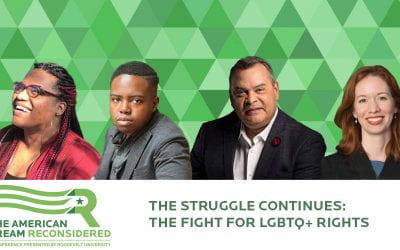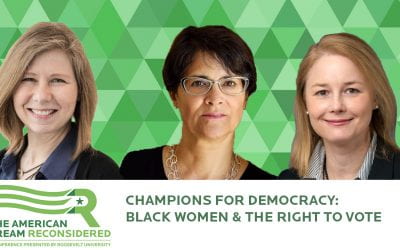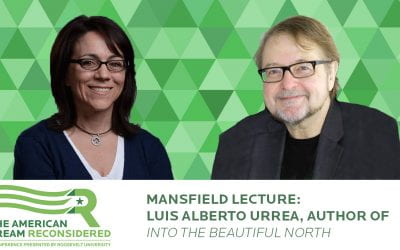In and beyond the multicultural classroom
the beginning
I took my first multicultural counseling class when I was 24. Until then, I had barely heard of concepts such as racism, sexism and social justice. I was born, raised and college-educated in Shanghai, China. I majored in psychology as an undergraduate student and was fascinated by all things related to the inner workings of human beings and the journey that we call life. Growing up in a divorced family with complex relational dynamics around me, I feel like I was training to observe human behaviors and be an empathic listener my whole life.
I experienced the “lost and found” period after college when I spent two years soul-searching for who I wanted to be and the career path to commit to. Mental health was not a recognized profession in China at the time, and there was no clear path to pursue further education. When I was finally able to admit to myself that I had a calling to become a therapist, it was like hearing the echo of my inner voice traveling through the mountain ranges from the other side of the valley. I decided to take a leap and I left the first part of my life behind to study mental health counseling in the United States.
It was in the third semester of my master’s program when I took the course on multicultural counseling. I learned about racism for the first time: race is a social construct that has little basis in biology. Instead, it has been made up to maintain social hierarchy. I remember feeling curious and astonished about the deep history of racial division in the U.S. while thinking, race is a unique problem in the U.S., not in China. I had thought, because people were of the same race where I grew up, there was no racism.
I began to make personal connections with the experience of discrimination and oppression when we discussed sexism and the effects of gender socialization in the following weeks. The professor, a wise and radiant Black woman and South African immigrant, led one activity where we were asked to rank our three most important identities in terms of race, ethnicity, gender, sexual orientation, social class, educational level, disability statues, etc. It surprised me when I ranked my identity as a cisgender woman as the most salient, since I had not reflected on it on a regular basis. Further readings, activities and discussions opened my eyes to a myriad of ways that I was taught to follow rigid gender norms under the influence of family, Chinese culture and media. The teachings on being “a nice and sweet girl” started since the day I was born and have a pernicious impact on the way I have chosen to express myself and live my life.
Through the reflection of my own oppression as a woman, I began to see the commonalities across all oppressive systems. Not long after my first lesson on racism, I was awakened to the reason why I had not truly understood the concept in the first place. While Chinese people belong to the same race as Asian, social hierarchies and inequities based on ethnicity, region and social class are omnipresent. Shanghainese people are notorious for looking down on people who are from out of town and do not speak the local dialect. The discrimination is not only overt and an everyday experience, but also systemic, as people who do not have registered residency in Shanghai have limited access to education, medical care, right to own properties and job opportunities based on governmental laws and regulations – similar to the ways institutional racism deprives Black, Indigenous, People of Color’s (BIPOC) equal rights to resources in the U.S. I had not made the connection between racism in the U.S. and regionalism in Shanghai because I grew up as a privileged local Shanghainese. Though I have observed discriminatory acts and policies against others my whole life, my Shanghainese privilege disconnected me from the visceral pain of living in a regionalist society.

Roosevelt University students’ meandering journey to seeing the true scope of oppression through multicultural education resembles my own experience as an international student. Colleges and universities are a place where students not only acquire knowledge and skills in specific disciplines, but also the ability to critically comprehend the reality of the world so that they can make up their own minds about why and how to use their skills. To comprehend the reality often involves seeing the world through the lens of the historic and ongoing fights for, versus against, humanity. Through the understanding the legacy of colonialism, slavery, genocide, racism, gender-based violence, homophobia, xenophobia, bodyism, ableism and classism, we become aware of our position in the social fabric. Multicultural education behooves us to see our unknowing participation in oppression and our responsibility to justice and humanity.
At an urban and socially progressive university like Roosevelt, each student is burgeoning in their understanding of our deeply complex world, while bringing their rich, diverse and culturally unique life experience into the learning community. They often have a fresh and keen eye on injustices, and yet to see the fuller and bigger picture could be enriching as well as painstaking. Like myself, students often readily connect with experiences of oppression that they have personally endured, but the owning of one’s privilege will only come with concerted efforts of self-reflection and humility. The interpersonal and overt behaviors of discrimination are more apparent to identify and change. And yet, to see oppression from a systemic and historic perspective would mean to grieve the totality of what has been lost for the oppressed and to confront the shame of the oppressor.
the process
Since taking my first multicultural counseling course, I have gone through a transcendental journey to connect systems of oppression with individual’s lived experience, a process that has completely changed the way that I see the world and my own life. Seven years later, I was beyond excited to teach the same course for Roosevelt’s graduate students and infuse the key lessons that I have learned into the course design.
First, to cultivate a social justice mindset is not only to recognize and embrace cultural differences, but to see social hierarchies that create privilege and oppression. Traditionally, multicultural classes focus on studying groups of people who share a certain identity (e.g., African American, Asian American, LGBTQ). This approach runs the risk of appreciating differences without focusing on the oppression that is at the root of injustices. By using readings, podcasts, videos, activities, mindfulness and discussions, the first six weeks of classes laid the foundation of systemic oppression, covering topics such as racial trauma, White fragility, intersectionality, decolonizing and indigenous ways of healing, feminist and liberation psychology, the intergenerational transmission of oppressive trauma, and how trauma affects the mind, body and psyche.
Furthermore, multicultural learning needs not to be cerebral thought exercises, but to connect with lived experiences and felt emotions. Each week, I had two students presenting a news digest of the week that shed light on multicultural issues. Students discussed current events from police brutality, the “missing White women” phenomenon, abortion legislation, sexual abuse cases, school opening and vaccination during COVID and human rights violations in China and the Afghanistan crisis. Students drew attention to local, national and international issues they personally concerned about, which broadened everyone’s perspectives, including my own.
Coming from feminist pedagogy, I shared the instructional power with students by co-teaching seven weeks of the course content on topics of sexism, LGBTQ issues, immigration and refugee issues, ableism, classism, ageism and religion and spirituality. There is a deep wealth of learning resources in a classroom with culturally diverse students compared to one that is relatively homogenous. Students selected to present on topics that they personally identified with or are passionate about. When a safe and supportive community was formed, students were eager to share their personal journeys, struggles and triumphs with their colleagues and friends in the classroom. While the instructor could assign readings and other learning materials on any topic, one is an expert only on her own lived experience. The lived experience of belonging to one or several cultural groups needs to be felt rather than taught. In these practices, students reckoned with the power of telling their own stories and challenging the narrative from a White, Eurocentric and dominant perspective. More importantly, they learned that multicultural issues with infinite nuances matter because we are in relation with one another. The humility to engage in deep self-examination is born from an unscathed ability to love others as one’s own.
the sitting with
Multicultural education is most effective when we move away from bullet points and exams, and instead invite an infusion of personal and authentic experience as learning materials in the classroom. However, a dynamic classroom poses challenges to the instructor, who is tasked with processing everything and all the feelings within the structure of 16 weeks — an impossible task repeatedly spoken about by instructors teaching multicultural courses. If the real world is complex and full of contradictions and heavy emotions, the classroom is inevitably a microcosm of that reality if we allow it to be.
When I was a student in the multicultural counseling class, a student presented as a White woman was defensive about addressing White privilege because she had grown up poor, having little awareness that being underprivileged economically did not take away her White privilege. Her comments ignited the classroom and brought on open confrontation from multiple students, both White and students of color. A friend of mine in class, a Black woman from the South, confided in me after class how hurtful it was to hear these types of comments in class. I am grateful for her trust in me, because as an international student who was fresh off the boat to the U.S., until that moment, I had not grasped the emotional valence attached to racial oppression and the White fragility that is defending it. I felt for my friend and was enraged at the White student.

I was also disappointed in my professor. She made space for us to have these tense discussions and allowed us to leave the classroom feeling uneasy and unresolved. The conversations we had in class would continue after class in small and trusted friend groups, where we kept wrestling with what we were feeling and why. The discomfort was not easy to contain. I wished the professor would just take the authority, as a professor and Black woman, and tell us what was right and what was wrong, as if that was all we needed to achieve justice. I remember she listened to our tense discussions week after week, patiently and intently. I remember she kept saying, “let’s sit with it,” a gentle but firm encouragement. I had no idea what “sitting with it” meant and did not want to hear it. The lack of resolution made me reflect on what happened in that class for years to come.
As more years went on, I became in awe of the strength the professor was modeling for us. There is no true reconciliation of historic oppression in the real world, so the ability to “sit with,” to process, to build alliances, and to carry on without the fantasy of easy solutions is what it takes to work toward social justice.
An inevitable déjà vu moment occurred when I was teaching multicultural counseling. A White-passing Latinx student spoke the “N” word in class and the whole class became agitated. I received several private emails from students to share their shock and anger, but when I created a space in class to process what happened, it was filled with silence. I told the class that it’s okay to sit with this heavy silence together. I also let them know that the tension is characteristic of multicultural classrooms, as students of color often feel overburdened by the emotional labor to educate White students, and White students lack the skills to respond to racial tension and therefore don’t want to make any mistakes.
A community rupture makes a long-lasting impact on its members and cannot be repaired from one conversation, just as personal conflicts take time to heal. It is often through engaging with and revolving conflicts, however, that we understand each other more deeply and get closer to each other. For the reminder of the semester, I created an ”open forum” every week where students could volunteer to prepare a written speech and share their reactions with the class. At first, students were frustrated by my attempt to create more space to talk about it. They said, “why can’t we just move on,” just as what I wanted as a student. During these challenging weeks, I often brought to mind the voice of my professor, “let’s sit with it.” Her warm presence gave me the strength to teach my students what it means to do the work.
Eventually, several students did take the “open forum” and shared their feelings of hurt, confusion, fear, helpless, as well as the dedication to further multicultural awareness. A few students reflected on the feeling of shame that they were not able to speak up in the moment, and that they learned how to be better social justice advocates in the future. One student remarked near the end of the semester, “At first, I kept thinking, can we stop talking about that awkward situation? But now I am thankful that I got to sit with the silence every week… Sure, we as clinicians learn about silence, but to experience it is different. Throughout this class I have learned what it means to sit with discomfort. We, as clinicians, are going to be able to bear witness to the pain of our clients.” If my students left the class remember feeling the discomfort and how to better sit with it, the classroom has accomplished what it was set out to do.

beyond the classroom
Evident by the journey of myself and my students, the meaning of multicultural education, its effectiveness and its impact on individual students and communities at large is not easily delineated, observable or quantified. Deep transformation evolves across one’s life span and ripples throughout society. Multicultural educators often encourage one another by saying, “we are planting a seed and hope that it will take root sometime in the future.” This is tested and true.
This work is also a labor of love that has to involve institutional support. Instructors who teach multicultural issues spend more time and energy shepherding students through emotionally challenging terrain. They often hold underprivileged identities as people of color, women, queer and pre-tenured. Minority faculty are more likely to be sought out for mentorship from minority students, and yet more likely to receive poor teaching evaluation due to bias and discrimination. Without institutional support, faculty who teach social justice issues are vulnerable to burnout and poor retention. As faculty do the heavy lifting, the institution should build a system to support this work by hiring minority faculty, offering mentorship and being thoughtful about teaching assignments and compensation structure.
My work would not be possible without professors and mentors who nurtured and modeled for me. I have also relied on a community of colleagues in and outside of Roosevelt to share the weight of educating the next generation for social change. Soon enough, Roosevelt students will embody what they have learned and teach others how to make the change that we desire to see. This is what multicultural education means: drops of water gather to make an ocean. ●
More in this section
The Struggle Continues: The Fight for LGBTQ+ Rights
The panel gathered Chicago activists from prominent nonprofits to discuss the history and future of queer and trans liberation.
Champions for Democracy
A group of historians took an incisive look at Black women’s battle for political rights, a fight that extends a century before and after the passage of the 19th Amendment.
Mansfield Lecture: Luis Alberto Urrea
In a wide-ranging lecture, author Luis Alberto Urrea discussed the true stories behind his novel Into the Beautiful North.



